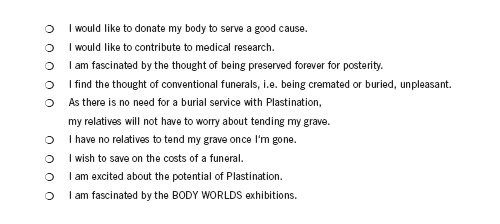This topless group portrait including one woman with double mastectomy scars is strangely sweet. They look like they’re having a good time, with their huge pants from 1996 and their various breast shapes.
Author: sarah
Eyes, loops, symmetry, quote
Pets, sex, reading about tantra
During a mission to get a couple of books for holiday gifts (look out family, I have eliminated my filter on gifts related to self-help and patriarchy), I picked up a copy of Urban Tantra for myself. The author, Barbara Carrellas, seems like a fab and interesting person in the realm of Annie Sprinkle, Betty Dodson, Kate Bornstein, etc., so I decided to risk offending my atheist sensibilities.
So far, as long as I interpret all talk of Kundalini snakes and chakra colours metaphorically and keep an eye out for my personal standards of cultural appropriation, the ideas and practices in the book are useful and fun and kind of adorable. I laugh with delight at least twice per chapter. It helps that besides being “urban,” the book is super queer, feminist, safety-aware, BDSM-friendly and supportive of sex workers.
My top delighted giggle so far is this suggestion from the chapter called “How to Touch.” She’s talking about something she calls “the Resilient Edge of Resistance,” a balance between pressure and support, touch that isn’t too hard or too light but just at the edge where you can gradually go further. She suggests some exercises to practice finding this edge, including this one:
Practice by petting a cat or a dog. Pets give great feedback. If they stick around and beg for more, you’ve found their Resilient Edge of Resistance.
I don’t usually think of that as feedback, but of course it is! I’m happy to see somebody giving pets credit for being in touch with their bodies and uninhibited about communicating feedback. That seems genuinely body-positive, to not just acknowledge our animal natures but admire other animals’ skills.
Burn scars, perception, beauty
In 2001 I met a burn survivor who allowed me to photograph her. She told me that she wanted to be photographed so that people could stare at her without feeling embarrassed. It was such an extraordinary experience that a few months later I flew to a burn conference and set up a makeshift studio in a hotel room, and asked people to let me know if they would like their portraits made. I was astonished at how many people did. What I learned from this extraordinary experience was that every burn survivor has a tale of courage to tell, and that the burns have their own eerie beauty. I also learned that after a few hours it becomes very difficult to see the burns anymore. When I returned and developed the photographs, I had to keep asking my wife “does this person look burned to you?”, because they all looked quite normal to me. My only regret is that I didn’t continue with this project longer than I did, but life intervened.
I love love love the possibility of not being able to tell who is scarred and who isn’t. Eye of the beholder.
Being useful, being dead
I just found this really old draft from my notes on death and dying. My lag time idea is really starting to shape up!
I’ve been working my way through Heidegger’s being-toward-death ideas from Being and Time, with the help of a How To Read Heidegger guidebook. It all hinges on death as nothing, non-existence, non-being (uh, non-Being).
Death, as possibility, gives Dasein nothing to be ‘actualized’, nothing which Dasein, as actual, could itself be.
(Dasein being basically a self-aware entity, a person. I blaspheme. Here’s a more thorough explanation.)
One irrelevant aside before I get to my point: my How To Read Heidegger guide was published in the US and written by an American, but uses European typographic conventions (in the quote above, the comma is outside of the quotation marks, for example). Presumably this is because that’s how Heidegger wrote? I didn’t notice the punctuation in Being and Time at all, but reading an American book with this old country punctuation was actually making me feel weird and scholarly. Using an alternate prose style guide— yikes!
Anyway. Death as non-Being. I just finished reading Mary Roach’s Stiff: The Curious Lives of Human Cadavers, which, in a way, is all about the kinds of being you can pull off when you’re dead. She talks about cadavers having superpowers— not being able to feel pain, for example— and being uniquely qualified to fill certain medical and research roles. She spends serious energy insisting on the importance of being an organ donor, of being useful to other people after death.
I ran into that same phrase at Body Worlds in Vancouver. Being useful. The body donation forms have checkboxes where donors can fill in their motivations, including items about serving a good cause and contributing to medical research. My memory of the poster at the exhibit (in 2006) was an option about “continuing to be useful after I’m dead,” but maybe that was just the vibe I got from this set of options (from the 2007 form).
That makes sense in a very practical way (what else are you going to use that body for?), but at the time it made the hairs on the back of my neck stand up and it still does. Telling people they can be useful after death borders on exploitative, to me. There are sane reasons to do something useful with your body, but there could be some unfortunate denial that I wouldn’t want to encourage. It’s a twist on the usual spiritual afterlife— “yes, you still die, but not all the way.”
Not to mention the striking similarity that the “motivation” section of the body donation form bears to a market research questionnaire. In Vancouver, the Body Worlds exhibit ended with a big display about becoming a body donor, with posters and consent forms. It was positioned right in the exit, so everyone had to walk through it, the way museums often position the gift shop. Creepy! And not because of the dead bodies! The whole thing struck me as a self-perpetuating industry, a closed circle of marketing. The exhibit is designed to convince people to donate their bodies to make more exhibits to attract more donors to make more exhibits… A bit of a pyramid scheme.
Scar, skin, textures
Fashion model with Asperger’s. Huh.
After reading this fairly incidental profile of a Top Model contestant with Asperger’s Syndrome, I am wondering if fashion model is the most mind-bendingly ironic job for someone with a diagnosable inability to conform to social expectations. Maybe an Aspie con artist would be more unexpected.
Scars, gray hair, “real” beauty
A photo: where I’ve been, by dayzoid on Flickr. A self-portrait I think.
I like this scar— I like looking at most scars, and I work on looking at the rest. But the photo itself seems like the kind of thing that gets referred to as “real” beauty in skincare advertising. An older woman, but with flattering makeup and lighting. Gray hair, but stylish and even. Not a bone rack, but posed to look smooth and curvy, never lumpy or saggy or folded. Making some kind of cute and peaceful facial expression. Definitely feminine, but not sexual (not coincidentally, usually looking freshly washed and clean). It’s a very contrived and limited type of “real.” Looking again, this photo is not as extreme as all that, but the demure smile and the smooth white hair reminded me.
I don’t get why more people don’t rant about how patronizing it is to use “real” as a euphemism for old or fat. I can’t decide if it is better or worse than the older concepts of “imperfect beauty” or “inner beauty.” There are probably more phrases in body image activism that drive me bonkers. The whole focus seems off to me— I don’t think it helps anyone to offer these alternate, consolation prize types of beauty, more ways to win at being beautiful. That doesn’t do anything to get away from ranking people or competing. I really think the focus should be on learning to see more kinds of beauty, to be a better beholder.
Fancypants neck brace, a knitting pattern

The first neck brace scarf was so quick that I was inspired to make another one. Usually I’m all about elaborate crafts that involve at least a year of delayed gratification, which I think makes me very vulnerable to the finished-object high. More more more!
I probably could have stopped before adding the fuzzy ruffle thing, but I wanted to make it weird. My vision was jellyfishy, but unless jellyfishes have a European royal court I’m not sure that really comes through. More of a bizarro-Elizabethan neck brace.
Here’s a snapshot through a dirty mirror that shows the front, and also, incidentally, a quite accurate representation of my personal idea of what I look like.

The creature itself looks like this.

Some patterns for knitting one.
- Knit a long triangle. The decreases don’t have to be evenly placed.
- I used random-width welts to make the fabric firm enough to stand up. (Alternating stockinette and reverse stockinette stitch.)
- The main piece used about 50g of worsted weight yarn (one thrifted ball), on 4.5mm needles.
- The ruffle took a few yards of mohair-esque stuff (again, thrifted and unlabelled) on 5.5mm… could have used much fatter needles for an airier ruffle.
- I tried it on to place the buttons (actually a long cufflink-thing made out of two pearl beads and some embroidery floss), and to mark the start and end of the ruffle.

Scar pride
At first I was just looking for a few photos of people’s scars, having been reminded by Erin’s copy of the Learning to Love You More book. But, in typical internetto fashion, now I am intrigued by the patterns that show up when you look at a mass of public scar photos. There are some popular subjects— self-harm exhibitionism and processing, scars from pregnancy and cesarians (not so much finding episiotomy scar pics), voyeurism with optional processing (especially around major burn scars, and ritualized scarification by some African cultures), manifestos and statements about beauty and beautiful scars, and more general scar pride and storytelling. I find this last one the least complicated, the easiest to post photos without major accompanying comments. (In this one I’m only spotting basics, about how it’s easier to be proud of pretty much anything when you are cute and posing, but I still like how that calculator watch makes her look tough.)
Purple neck brace, a knitting pattern

I made this neck warmer in one afternoon, with no counting. Hooray! It even ended up with half a Darth Vader collar that I like, and made a couple dents in my crafting stash. Time for heroic poses in the bathroom mirror.
I was remembering this tapered neckwarmer and this scarflink (scroll to Oct 27, 2002) while I knitted.
It looks like this on its own, if you want to make something similar.

This pattern is such a non-pattern that I insist on writing it formally, because it is funny.
Materials
- 100g (60m) of thick and thin wool
- 12mm needles
- 2 buttons and thread
Pattern
CO 22 sts.
Work in garter stitch, decreasing one at each end of random rows (approximately every 4-6 rows), down to 2 sts. K2tog.
Pull yarn through remaining stitch and leave the tail hanging out as a fastener.
Weave in the cast on end.
Sew or tie the two buttons together to make a cuff-link type thing. Button it into the outside layer of the scarf and wrap the tail around it to fasten. (Move or flip the button at will.)
The end.

All the ingredients have stories. Past projects, hand-me-downs, gifts, inheritances. That feels good.
Various marriage- and baby-related plans
- I think I want to get divorced sometime. Sorry marriage, I just don’t care about you. It would be much funnier to be divorced to my loverman, and introduce him as my ex-husband. The former Mr. Mundy. I think this would offer a much more accurate shorthand expression of our relationship. Right now I think the government approval is confusing.
- So I am trying to figure out how to not have that look like we tricked people into giving us wedding presents. Because it wasn’t like that. (Except for the usual capitalist / consolidation-of-wealth aspects of the whole institution of marriage, but we actually work pretty hard to get around a lot of that.)
- This would solve my main wedding-related regret, which was forfeiting the opportunity to birth a third-generation bastard. Both Galen and I were conceived out of wedlock, and so were his mum and my dad. I think this is a proud heritage, even if it makes my dad roll his eyes.
- I would be willing to conceive a baby in wedlock (but not in a headlock) and then birth it outside of wedlock.
- Also I am considering not disclosing the sex of any children I might squeeze out for at least a few days after they are born, to give them some space to be treated as ambiguous slugs. I don’t think that’s weird, but Galen thinks it might freak people out. So heads up, people who would be meeting these hypothetical spawn.
- I guess that means they might not get named for a few days, also.



